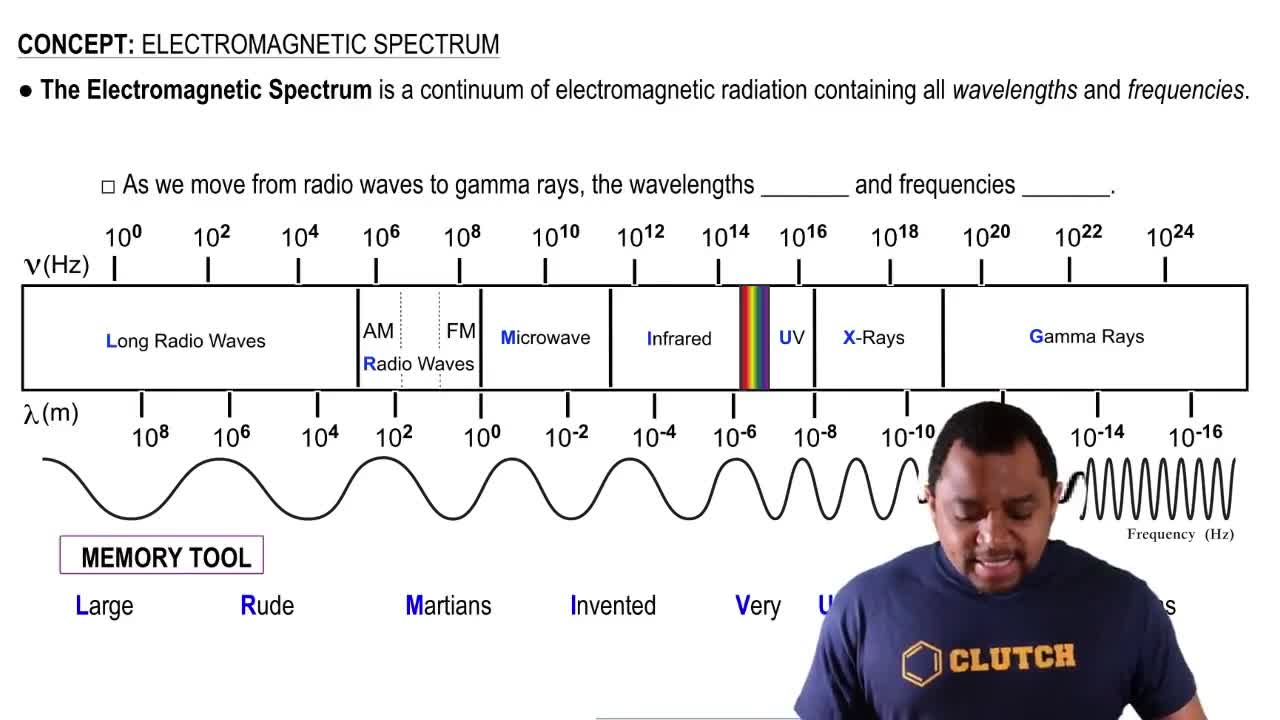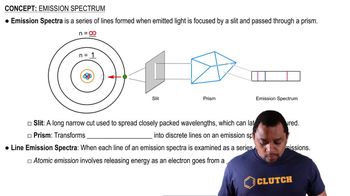Consider a transition in which the electron of a hydrogen atom is excited from n = 1 to n = ∞. (b) What is the wavelength of light that must be absorbed to accomplish this process?
The series of emission lines of the hydrogen atom for which nf = 3 is called the Paschen series. (a) Determine the region of the electromagnetic spectrum in which the lines of the Paschen series are observed.
 Verified step by step guidance
Verified step by step guidance
Verified video answer for a similar problem:
Key Concepts
Electromagnetic Spectrum

Hydrogen Emission Spectrum

Paschen Series

Consider a transition in which the electron of a hydrogen atom is excited from n = 1 to n = ∞. (d) How are the results of parts (b) and (c) related to the plot shown in Exercise 6.88?
The human retina has three types of receptor cones, each sensitive to a different range of wavelengths of visible light, as shown in this figure (the colors are merely to differentiate the three curves from one another; they do not indicate the actual colors represented by each curve):
(c) Explain why the sky appears blue even though all wavelengths of solar light are scattered by the atmosphere.
The series of emission lines of the hydrogen atom for which nf = 3 is called the Paschen series. (b) Calculate the wavelengths of the first three lines in the Paschen series—those for which ni = 4, 5, and 6.
Determine whether each of the following sets of quantum numbers for the hydrogen atom is valid. If a set is not valid, then indicate which of the quantum numbers has a value that is not valid: e. n = 2, l = 2, ml = 1, ms = +1/2
